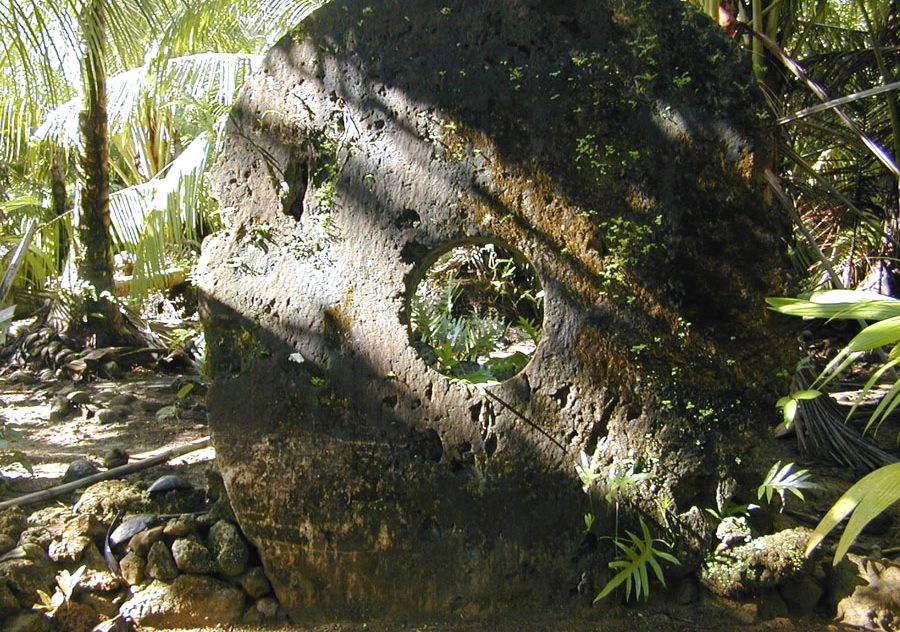Money Is Whatever We Believe It To Be
As I study the history of money and how we got here I am lost in awe of how interesting the journey has been.
Yes, this is an article about the history of money that was not taught in class. It is relevant for our understanding of where we might be headed next.
In case you don’t know, money has not always been the note we carry around today. It has not always been fiat. We’ve moved from stones (yes that’s not a mistake) to seashells and from one form precious metal to another. It’s been a long journey down here and I want you to know that. I’m telling you this story not in any chronological order at all.
Rai Stones of the Yap Island
I picked Rai Stones first because it is one that most counters the idea of money as we know it today.
These stones were not native to Yap and we’re brought in from a neighbouring community of Palau or Guam. The beauty and rarity of the stones made them desirable and valuable to the Yapese. Procuring it was difficult because it involved a laborious process of quarrying and then shipping.

This feature of it, scarcity and the work required to get it made it become the way the Yapese transfer value among each other. That is, it’s their money.
And because of the size of the stone, they were usually placed in the public square. At the public square, the ownership of the stone is transferred through a public announcement. This was used for centuries if not millennia on the island until no more.
The Rai stone stopped being the way to exchange value when a business-minded man named O’Kafee flooded the island with different Rai Stones which he got for free and imported to the Yap Island. When scarcity is taken away from money, it stops being money.
Other forms of money
While the story of Yap Island is unique, historically, some other forms of money have also been used in the past.
Cows and Sheep – they were used around 9000BC as a unit or exchange. This was one of the first iterations of money after the era of a trade by barter. It was made possible because men started domesticating them and since they tend to share common characteristics.
Unlike trade by barter, you don’t have to locate someone else that needs your good. Cows can be easily exchanged. That’s it, and we had new money.
Seashells – they were widely used in Africa, Europe, and Asia. They are similar to today’s coin and might have also birthed the idea of coins that were later of bronze and copper.
Gold – this is still in use today but more as a store of value asset than as a currency.
Fiat – what we know as money. A dollar or Naira or Rupee bill. It’s been a journey to where we are now.
As you’ve seen from all these examples, money can be anything once society agrees that it is. Money of itself should not necessarily have any intrinsic value. Anything that we agreed upon to use as money becomes money. And it will interest you to know that you can have your form of money as long as someone else is willing and ready to accept from you what you have to offer in exchange for the value they will provide.
On a societal level though, for value exchange to be as frictionless as possible, a generally accepted form of money must emerge. That’s how we can all have a common language. And that’s why we are currently settled on USD and NGN and Rupee or anything your country might have agreed on.
When money is not scarce, it is no longer money
All through history, the reason why money has changed is that the former form of money stopped being scarce. Once it stops being scarce, it stops being a medium of exchange and won’t be able to store value. At that point, it definitely doesn’t matter again if it serves the unit of account function.
The reason why Rai stone stopped being money is that O’Kafee took away its scarcity from the island. He flooded the island with different Rai Stones and it crumbled.
Gold has been for ages and a lot more other innovation has come and gone. Yet, Gold remains today as something that can serve as money. Because people can’t easily make a lot of it.
Fiat on the other is just as scared as the government wants it to be now. And while it still serves as the mainstream money, its inherent flaw of infinite printability may become its fall.
Whatever may happen, the world will always find a way to move value across space and time.
